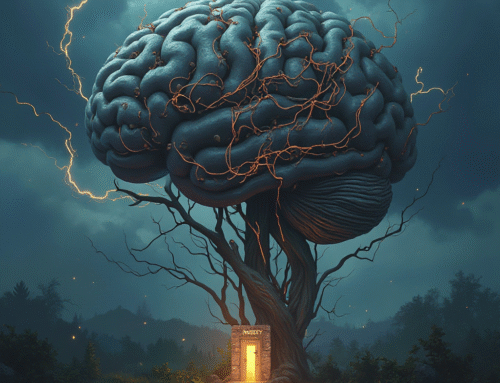How Understanding Mild Autism And ADHD Can Transform Lives
How Understanding Mild Autism And ADHD Can Transform Lives
How Understanding Mild Autism And ADHD Can Transform Lives
Finding your way in the world of mild autism with ADHD? It’s like putting together, a tricky puzzle, right? Both these things are different, but they sometimes share the same brain areas. It makes supporting amazing individuals with both conditions, a unique job. Mild autism shows up in subtle social stuff and talking, while ADHD’s all about trouble focusing and acting on impulse. Mixing them together creates a mix of behaviors and traits that might be misunderstood or missed.
Knowing how mild autism and ADHD hang together is huge for caregivers teachers, and mental pros. It helps to give better help suited to each person’s needs. When we know the small details of each condition and see what they share, real magic can happen. This article is gonna dig into these ideas, giving hints, and ideas to help support those dealing with both. Whether you’re a parent, teacher, or someone juggling these, the insights here might brighten this complex path.
Looking at Mild Autism: Mild autism, whatcha might call it as Level 1 Autism Spectrum Disorder (ASD), involves social interaction bumps and talking hurdles, plus repetitive actions and keen interests. Compared to tougher autistic types, folks with mild autism don’t need a lotta help at home and might live quite independently, sometimes. But wow, they still face some hurdles, especially in social chains where picking up what others mean is really really key. And, when mild autism and ADHD groove together, the soup of traits gets thicker and interesting.
Usual things you’d see include trouble looking at someone in eyes, reading messaging from how others move, and catching small talking hints. Someone might love routines or hate changes like a messed-up daily schedule making them nervous, focusing deep on one fascinating topic like cars or stars, and sharing details like crazy but; struggling in chitchat. These traits could mean confusion or being alone without friends if others don’t get it, just right.
Remember autism ain’t one-size, it’s a grande spectrum. That means the issues and how serious they, show up differently in people. Mixing ADHD with mild autism adds extra spices like attention stuff and doing things too quick. Getting how wide-ranging and mixed-up it could be helps educators, and helpers support these interesting individuals high up. By seeing all sides of mild autism, combined with ADHD, we’re closer to a fun, all-welcome place.
Spotlighting ADHD: ADHD, or Attention Deficit Hyperactivity Disorder, is a brain development quirk involving scatterbrain moments, hyper duo, wild acts trickling into daily routines. Someone with ADHD might struggle to keep attention on stuff, hit or miss the guide, or fall behind organizing bits and bobs. School work, daily jobs, and chatting with pals? Yep, might be tricky things. ADHD ain’t just being a ball of energy or being scatterbrained; it’s having unique brain ways how they deal with ideas around.
Important bits in ADHD?
Bit of forgetfulness sometimes, witch can twig students not reaching their brains full potential, hyper bustin’ out, and needing to keep moving. Mad rush through decisions or interrupt good chat follows, hard to hold back sometimes. These feels could be different per folks with some having more of one type than the other.
Three BIG cat: Inattentive mode might show unstringing focus or falling short on stuff remembered PB&J assembly they did yesterday! Versus active-impulse-side showing lots of chatter never calming down seat squabble to fidgets. Do people mix them all? Possible; they can. At Head scratches through this complexity of slightest twitches. Instead definitive an answer could our explore dive down might wish await readers?
Mixing both inattentive hyperactive-impulsive symptoms gives a balanced, kind traits Understanding this differences important for family members teachers in creating strategies help the unique needs people with ADHD, especially when these traits exist with things like mild autism.
Mix Between Mild Autism ADHD
Mild autism ADHD shows us interesting overlap of shared brain features that family members, teachers, and mental health helpers need understand well. Both autism and ADHD are developmental issues, affecting how our brain develops works. They have in common things like unusual brain connections differences in brain chemicals, which show as similar behavior traits. For example, both people with mild autism ADHD might have trouble like executive functionin’—skills needed for planning, organizing, and managing time well.
Even with these shared brain-basics, there are different behavior similarities and differences between mild autism and ADHD that affect ways to help. Both groups might be impulsive and get distracted easily; but reasons can be different. In ADHD, being impulsive often comes from trouble with controlling reactions to things, while in mild autism, it might be about wanting routine or predictability. Also, both issues can make talking and understanding in social chats tough, folks with mild autism might struggle understanding social signs while those with ADHD might have hard time focusing on talks.
The rates of both mild autism with ADHD together is big, studies say like 30-50% of those diagnosed with autism also are fit for ADHD. This big comorbidity rate matters for diagnosis treatment, means need for thorough look at both diagnoses, highlighting crafting specific strategies that help the unique challenge mix people with both issues deal. Understanding these overlaps better lets family members and teachers create more powerful helping activities that make learning and social fitting in better, hopefully improving quality of life for those affected.
Similar Traits in Folks with Both Conditions
People who have both mild autism ADHD often face social talk challenges manifestin’ in different ways. For example, might find social signals hard or have reciprocal conversations tough, leading to not understand think they isolated. These talk struggles flusterrated by fact that ADHD makes it hard remain focused in talks, causing quick interruptions fast topic change. Understand these dynamics very crucial, for family members and teachers as they create personal educational plans boosting social skills and real connections.
Being impulsive and distracted are usual traits in those with both mild autism and ADHD. This mix often makes it hard to get organized, finishing jobs, or following directions. Like, child might not stay put in class find waitin’ their turn group task difficult. These actions not trying be disruptive but come from neurological differences. By noticing these troubles family members and teachers make steps like breaking tasks into tiny parts or adding move breaks that could maybe help keep focus and stop impulsive behaviors.
Feeling senses and controlling emotions, other spots where people both things might get obstacles.They might be very sensitive sounds, lights or touch that can lead to higher anxiety or upset in too much environments. Also, controlling emotions can be truly hard, making big reactions to small events. Creating places that less sensory overloading and teaching how to better control emotions are all parts of any good personal education plan needed. By looking at these needs family and teachers can help those with autism ADHD enjoy their world more comfortable and with confidence, truly.
Caregiving Education Strategies
Supporting those with mild autism and ADHD need having thoughtful methods honor individual’s unique strengths troubles’ one good approach to make custom learning plans, embracing both autism ADHD traits. like integrating interests in learning things making it more interesting remembering.. With all this talk, could we do more to make life easier for them?
If a young one loves trains, why not use train-themed math tasks or reading books to grab their interest and make learning fun. Same way, if noise bothers them—try giving noise-blocking headphones in a loud classroom—this maybe helps them to do well and feel good. Creating tidy places can be big for some kids with little autism and ADHD.
A laid-back routine can help them worry less and know what’s gonna happen next. Picture charts and to-do lists work great too because they show clear steps during the day. This kind of help makes it easier to keep time and finish things. Also, making quiet corners with less mess can let them keep their focus and energy better.
Helping zebras gain talking skills it’s important too for kids with little autism and ADHD. Letting them join tiny group activities where teachers show them how to talk to other people is great. They practice what to say and get fast help. Acting out how to start chats or sort out fights can help them feel good around friends.
Plus, learning to understand others through stories and seeing different views can grow better relationships.. So maybe using these easy tricks, babysitters and teachers, they might give a cozy space where kids both study well and hang out happily. What do you think?
Talking clear is key for helping people with little autism and ADHD cuz it can really help them get things and stay interested. You know when someone has trouble paying attention, making your words clear, perhaps can help a lot.. You pick simple, straight words that don’t leave them guessing. Like instead saying “Could you maybe tidy up your room sometime soon?” try “Please clean your room by 4 PM.: This can stop any mix-ups and makes sure things are known.
Tweaking how we talk to match each kid’s needs is about knowing they each understand different. Some might need you to speak slowly or repeat stuff for it to sink in. You also want to use words they’re comfy with for more reasons In schools, using easy words might help them stay keen and learn better even if focusing is hard..
Looking at drawings or helpful items can also make communicating finer by giving them plain things to look at. Picture plans like planners, for example, can let kids with autism and ADHD handle routines and shifts smoother, bit less worried, and more on point. Tools like picture cards can help too where talking isn’t so to the point.. How about trying these new tips to see how they work?
For families dealing with simple autism and a bit of ADHD, finding good support’s pretty nice right? Places like Autism Speaks and CHADD give tons of info and meet-ups. These places share teaching stuff, meetings, and forums for helping families get to know their loved ones’ special ways maybe including how they talk. Local social centers sometimes also have meet-ups for family folks to chat and swap ideas too.
And don’t forget, there’s lots to read and learn to know more about this world. Useful books like “The Explosive Child” by Ross W. Greene and “Driven to Distraction” by Edward M. Hallowell and John J. Ratey offer ideas on handling ADHD along with a bit of autism. These readings talk about daily life. How about being more understanding and gentle in our caring ways? Easy websites like Understood.org also have words and tips made just for teachers and parents working with these things.
Choices like seeing family helpers, doctors, and child experts with medicine can be super helpful for figuring out what each child needs. People like occupational healers and talk doctors can give focused ways to help chat trouble and if their senses are bugging.. Maybe, giving these new resources a try won’t hurt, right?
Many clinics now give telehealth services: this makes it easier for families to reach expert help no matter there geographical location. Chatting with these professionals can give families personalized plans to help their loved ones better.
Personal Stories and Experiences
Hearing stories from people with mild autism and ADHD is golden. These give big insights into what they go through everyday. Like Sarah, a young adult diagnosed with both in her high school years. For Sarah, finding out was first scary: but it later becomed a key moment by giving her clarity and understanding.
She shares how having the name of mild autism helped her get her unique way of thinking while the ADHD name explained her struggles with focus and impulsivity. This self-awareness helped Sarah stand up for herself in school which led to changes that suited her learning style better.
Caregivers and educators also big role in shaping experiences of people with mild autism and ADHD. John, a dad of a ten-year-old kid with both diagnoses, tells how understanding his son’s needs changed there family life. First overwhelmed by his son’s impulsive action and struggle with social life, John searched help from professionals who said being patient and using individual plans is really important. By putting in place structured routines and using picture aids to help talk, John saw really great changes in his son’s strength to handle daily things and be more positive with mates.
Teachers like Ms. Thompson who has classroom which includes students with mild autism and ADHD, explains how using special teaching ways really helps. She says knowing the shared bits between autism and ADHD helped her make a more comfy learning space. By having sensory-friendly spots and promoting team work tasks, Ms. Thompson saw better interaction and social skills in her students. Her style underscores the importance of understanding these conditions not just as limits: but as chances to help diverse thinking and learning styles.
These stories and learnings show the deep effect that getting mild autism and ADHD has on daily life. The journey to find out can be tough, but it also opens doors to more empathy and help. By sharing these stories, people, families, and educators add to a bigger awareness that cheers acceptance and changes in both personal and community spaces.
Fostering Understanding and Support
In closing, getting mild autism with ADHD means knowing the special mix of traits and problems these folks go through. By learning about the shared brain bits and behavior sameness: caregivers and teachers can better help those touched by it. Adjusting plans to each person’s needs, like using simple talk and set up environments, is key. This article has brightened up key bits on these overlapping conditions, stressing the value of empathy and informed help in making better outcomes.
Keeping on learning and staying in the loop are needed for making friendly spaces for people with mild autism and ADHD. By staying smart, we can build a deeper feeling for their life games. This doesn’t just make us better help them: but also makes our communities richer by accepting diversity. Let’s keep aiming for ongoing learning and kindness, making sure all have chance to shine. What do you think about this?
Homeopathic Medicines for Mild Autism
More people investigate homeopathic therapeutics as a secondary autism management practice to provide distinctive views on diagnosis evaluation alongside therapeutic approaches. The concept of homeopathy differs from standard therapeutic practices because it works to treat both entire body well-being in combination with physical and psychological signs while conventional medicine concentrates on behavioral modifications and medical drugs. Parents find the holistic approach appealing for health-related choices because it matches their chosen beliefs about healthcare.
When using homeopathic treatments for mild autism patients require individualized and specific therapeutic approaches that match their needs. Homeopathy practitioners begin care by conducting detailed examinations that evaluate both symptoms and personality traits and past experiences of each child to create customized treatments.
Homeopathic doctors suggest remedies of Calcarea carbonica together with Arsenicum album through an assessment of unique behavioral patterns and sensitivities to create relaxation and better social capabilities. Homeopathy-based interventions serve as a flexible method which helps families care for their autistic children throughout their development process.
neurological overlaps, behavioral traits, coexisting conditions, support strategies, individualized education plans, sensory sensitivities, attention difficulties, social communication challenges, diagnosis process, intervention techniques,
caregivers, educators, parents, mental health professionals, individuals with autism or ADHD,






Awesome https://is.gd/tpjNyL